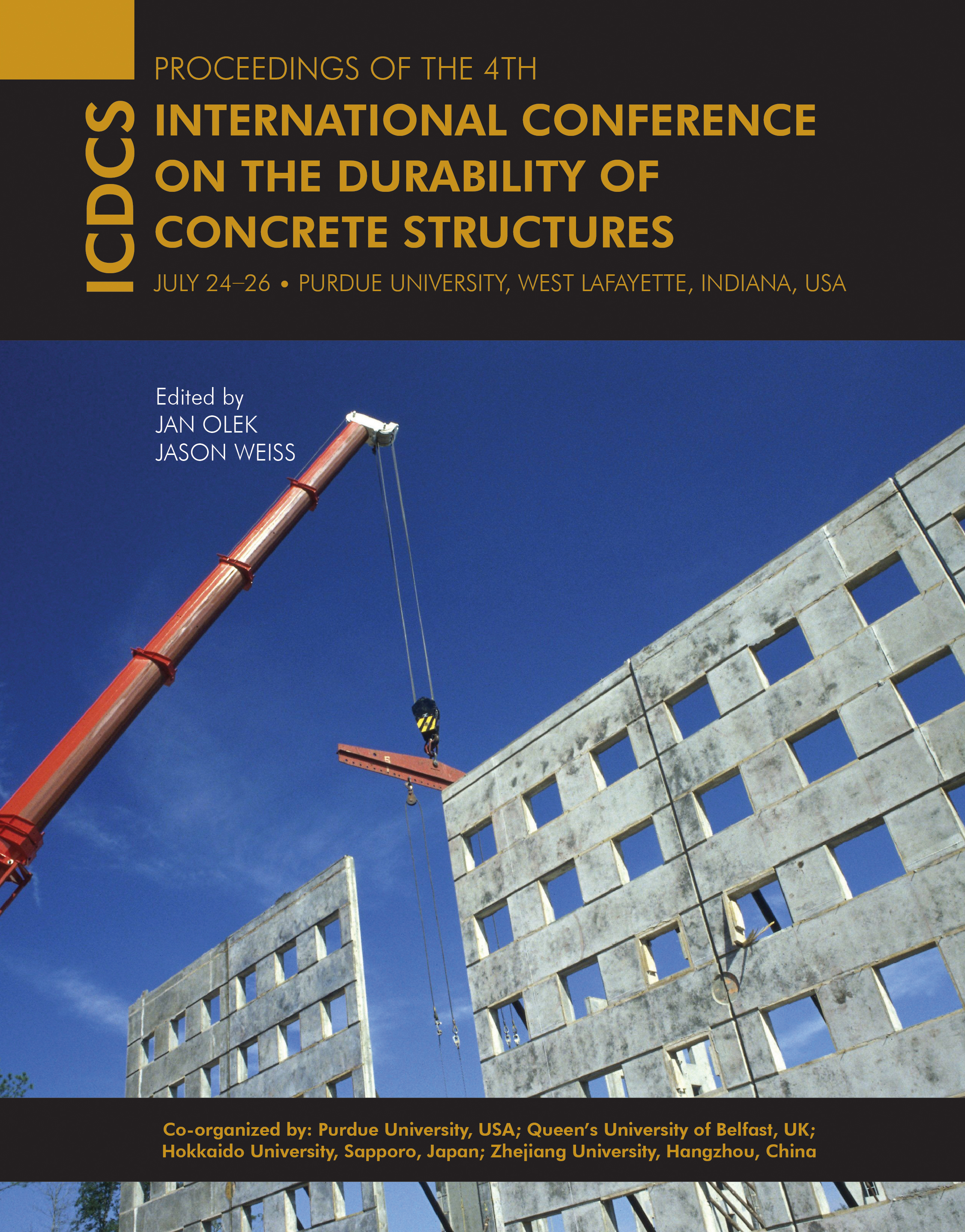Abstract
Electrical measurements are becoming a common method to assess the transport properties of concrete. For a saturated homogenous system, the surface resistance and the uniaxial resistance measurements provide equivalent measures of resistivity once geometry is appropriately taken into account. However, cementitious systems are not always homogenous. This article compares bulk and surface resistance measurements in cementitious materials intentionally composed of layered materials (i.e., layers with different resistivities). For this study, layered systems were composed of paste and mortar layers, representing the heterogeneity that can exist in the surface layers of field applications as a result of differences in moisture content, segregation, ionic ingress, carbonation, finishing operations, or ionic leaching. The objective of this article is to illustrate that these electrical measures can differ in layered systems (with sharp layer boundaries) and to demonstrate the impact of the surface layer properties on the estimation for the underlying material properties, for both cylindrical and prismatic specimens. Accounting for the effects of a surface layer requires a separate correction in addition to the overall specimen geometry corrections.
DOI
10.5703/1288284315417
Included in
Surface and Uniaxial Electrical Measurements on Layered Cementitious Composites having Cylindrical and Prismatic Geometries
Electrical measurements are becoming a common method to assess the transport properties of concrete. For a saturated homogenous system, the surface resistance and the uniaxial resistance measurements provide equivalent measures of resistivity once geometry is appropriately taken into account. However, cementitious systems are not always homogenous. This article compares bulk and surface resistance measurements in cementitious materials intentionally composed of layered materials (i.e., layers with different resistivities). For this study, layered systems were composed of paste and mortar layers, representing the heterogeneity that can exist in the surface layers of field applications as a result of differences in moisture content, segregation, ionic ingress, carbonation, finishing operations, or ionic leaching. The objective of this article is to illustrate that these electrical measures can differ in layered systems (with sharp layer boundaries) and to demonstrate the impact of the surface layer properties on the estimation for the underlying material properties, for both cylindrical and prismatic specimens. Accounting for the effects of a surface layer requires a separate correction in addition to the overall specimen geometry corrections.





